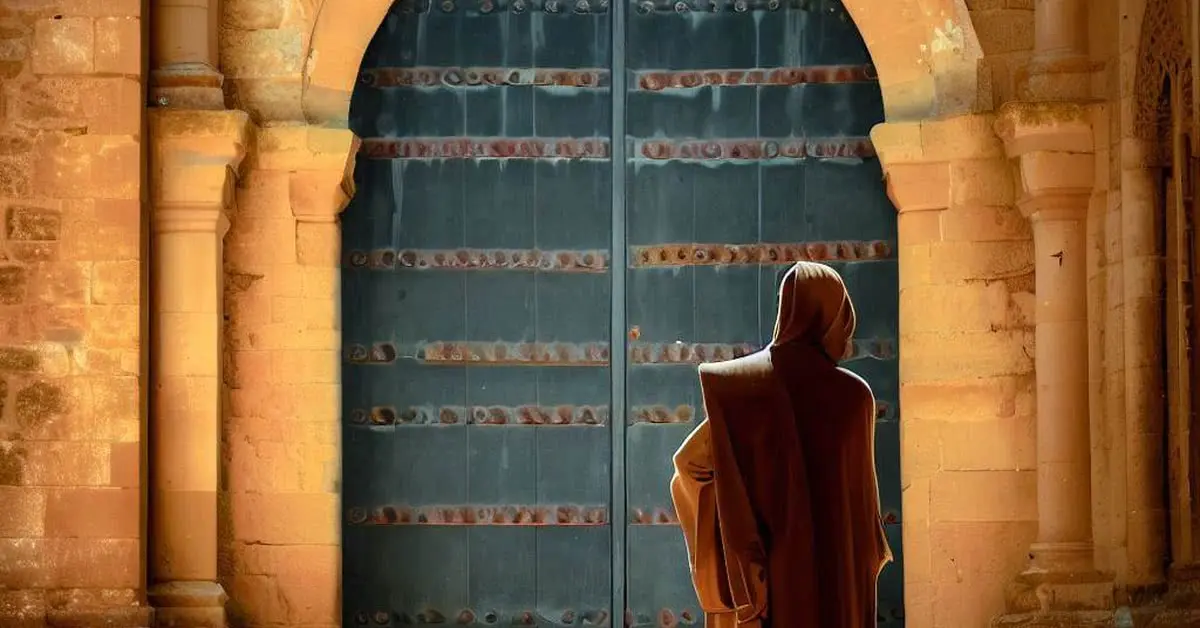
Camino Francés: Estella to Los Arcos - Stage 6
Posted: | Updated:Reading time: 13 minutes
Camino Francés: Estella to Los Arcos - Stage 6
Posted: | Updated:Reading time: 13 minutes
By: Simon Kemp, Editor
Stage 6 of the Camino Francés takes pilgrims from the historic town of Estella to Los Arcos, covering a distance of approximately 21 kilometers. The route passes through picturesque landscapes, with vineyards, olive groves, and rolling hills providing a stunning backdrop. Along the way, pilgrims can explore the rich history and culture of the region, with a range of historic landmarks and charming villages to discover. The sixth stage of the Camino Francés offers a unique and unforgettable experience for any pilgrim seeking adventure, spiritual growth, and cultural enrichment.
Estella to Los Arcos Route Map
Camino Frances Diary: Route segment 6
Monday 2nd October 2000
There is a point on the path just outside Estella where it divides into two. The left most path apparently is the longer and easier path. The right most path goes through more hilly terrain but is quicker. On the left path there is a Winery, Bodegas Irache, just up the road so that is an easy choice to make.
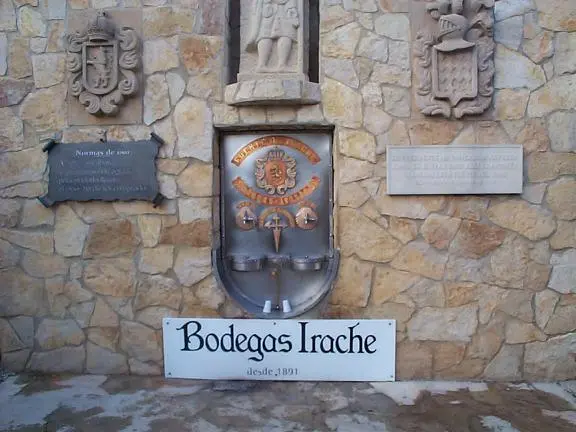
It is still early and the gate is locked. One of the French guys bangs on the gate and attracts the attention of one of the
workers who just happens to be the one with the key. I try some of the wine but it is obviously new as it is still frothy. It
is powerful stuff and more than a glass would not be such a good idea this early in the day.
The road takes us past a new looking Butlins type tourist spot. I notice a sign for new houses here and work out the price in pounds. For a large 5 bedroom house here it works out at about £50,000. The same thing where I live would be at least five times as much.
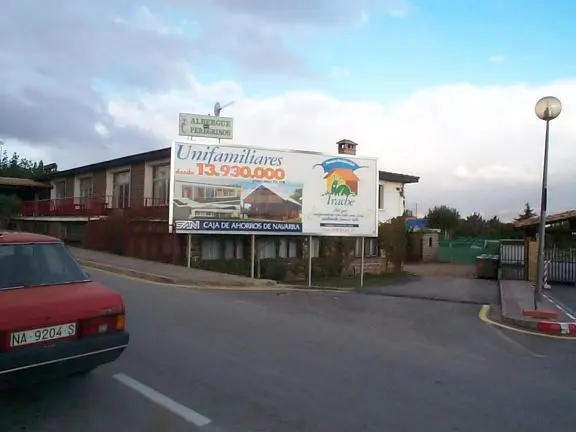
The path after this takes us through the wine-growing region proper of “La Rioja”. The soil here is very strange, having a very dark brown, purple color to it. The Camino Francés path here has been cleaned up to suit the wine growers and is relatively straight and wide.
There are not many trees here and there is a very strong wind, which I fight all the way today. Caroline and I seem to be walking at more or less the same pace and it is good to talk to her.
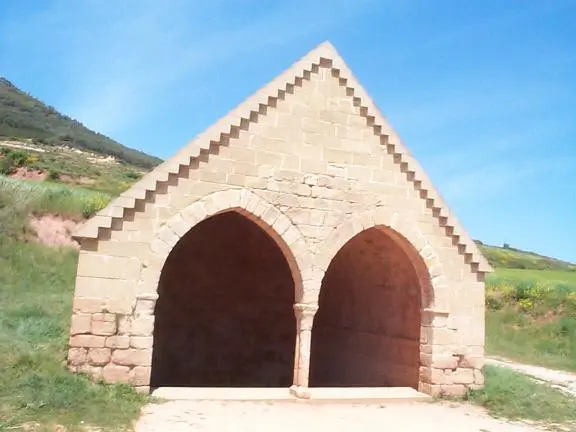
I notice some roman pottery tiles on the ground and mention them but she just shrugs her shoulders. Not interested. I find out later that she spent a year assembling roman pottery jars from fragments like these and didn’t find the sight of one little piece in the ground to be anything to get excited about.
But at the time I thought she wasn’t interested in what I had to say. It is so difficult sometimes to understand why someone acts they way they do and this was a good example of finding out the answer only later. It pays to be patient.
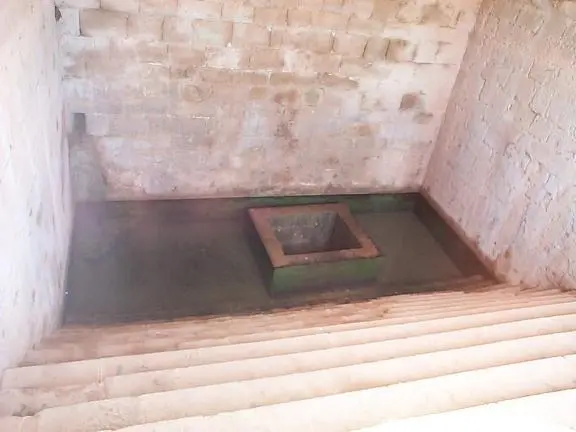
There are few places to stop according to the map and we make our way through the village of Villamayor De Monjarin. There is a bar here and Caroline is as passionate about coffee as I am so we stop. Caroline disappears somewhere and returns, excited about the presence of a real fire next door. We can go in and eagerly do so. A Dutch couple runs this place and they seem pleased to see pilgrims today. A Spanish couple, Carlos and Olga are sitting outside and as I have not introduced myself yet, I say hello. Before long Lisa and Geordie also show up and we have a pleasant hour sitting by the fire.
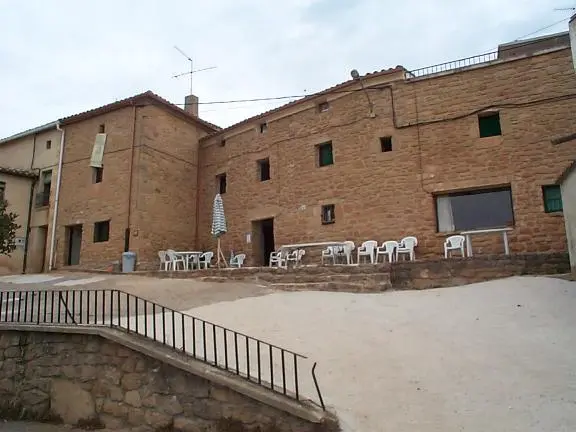
We gradually disperse and Caroline and I continue walking through the wine fields. Eventually we come across a large haystack and as I am distracted by something or other, the next time I look up there is no sign of Caroline. But the road stretches for a mile ahead and I figure that there is no way she is that far ahead and I assume that she is taking a leak behind the hay stack or something. But actually she wants to stop and we spend a pleasant hour having a light lunch out of the wind but in the sun.
She seems to like to stop for a while every hour or so and so paces herself. I can see her walking ahead of me and she is clearly having trouble with her backpack as she is trying to support it by the straps to pull it up. Her backpack is much too big for her and doesn’t sit in the curve of her back, as it should.
The walk today is only 22 KM and it does not take long to arrive at Los Arcos. But the town seems more deserted than usual for the time of day and we discover later that the townspeople are on strike about petrol prices or something. There won’t be much of a chance to eat in a bar today and eventually a shop opens.
Caroline and I offer to make the meal tonight and we agree on pasta. I get the ingredients but there is not really enough sauce and although they are polite about it, I can tell that they would have preferred a better meal.
Departure point: Estella
Estella is a town located in the heart of the Navarre region of northern Spain that has played a significant role in the history of the country. Founded in the 11th century, it was an essential stop on the Camino de Santiago pilgrimage route, attracting pilgrims from all over the world. The town boasts a rich cultural and architectural heritage, which is evident in the numerous landmarks and monuments scattered throughout the town.
Location and History
Nestled in a valley surrounded by the stunning Urbasa and Andía mountain ranges, Estella enjoys a prime location for visitors seeking to explore the natural beauty of northern Spain. The town’s strategic location on the Camino de Santiago also made it a key location for trade and commerce in the Middle Ages, which has contributed to its rich and fascinating history.
Points of Interest
Estella’s historic center is a testament to its rich cultural heritage, with impressive landmarks that date back to the Middle Ages. The Palace of the Kings of Navarre, a stunning Gothic-style building that dates back to the 13th century, is a must-see for visitors interested in architecture and history. The Church of San Pedro de la Rúa, a Romanesque church dating back to the 12th century, is home to impressive carvings and artwork that showcase the town’s artistic heritage. The Gustavo de Maeztu Museum, housed in a 16th-century building, is also worth a visit for its collection of modern art and exhibitions.
Camino-related Services
As a stop on the Camino de Santiago pilgrimage route, Estella offers various services and amenities for pilgrims. Accommodation options include budget-friendly hostels and private rooms, while restaurants and cafes serve delicious Spanish cuisine, such as tapas and local wine. Shops selling souvenirs, hiking gear, and other essentials are also available. Medical facilities and pharmacies are accessible to provide pilgrims with necessary care and assistance.
Festivals and Events
Estella celebrates its rich cultural heritage with lively festivals and events that take place throughout the year. The Wine and Tapas Fair is an annual event that features wine tastings, local delicacies, and live music performances. The Fiestas de Gracias, held in August, is another significant event that honors the town’s patron saint and features music, dancing, and fireworks.
Estella showcases the essence of northern Spain’s rich history, cultural heritage, and natural beauty. Its stunning mountainous surroundings, impressive landmarks, and lively festivals make it a unique and memorable destination for visitors.
Route Description
The sixth stage of the Camino Francés from Estella to Los Arcos is approximately 20 km long and takes an average of 5-6 hours to complete. The route is relatively easy, with gentle slopes and few steep climbs, making it a great option for walkers of all skill levels.
The trail starts in the medieval town of Estella and takes pilgrims through beautiful vineyards and olive groves, as well as small villages and towns with a rich history and culture. The route follows the River Ega for much of the way, providing a peaceful and scenic backdrop to the journey.
One of the highlights of this stage is the stunning Irache Monastery, located about 6 km from Estella. The monastery was founded in the 10th century and has played an important role in the history of the region. Today, it is known for its wine fountain, where pilgrims can enjoy a free glass of wine.
As the trail continues towards Los Arcos, pilgrims will pass through several small villages, each with their own unique charm and character. One of these villages is Villamayor de Monjardín, which sits on a hill overlooking the surrounding countryside. The village is home to the beautiful Church of San Andrés, which dates back to the 12th century and is a stunning example of Romanesque architecture.
The trail then continues through the countryside, passing fields of wheat and sunflowers, before reaching the town of Los Arcos. The town is situated on a hilltop and offers stunning views of the surrounding landscapes. It has a rich history, with several important churches and landmarks, including the Church of Santa Maria, which dates back to the 12th century and has a unique Gothic-Renaissance style.
The sixth stage of the Camino Francés from Estella to Los Arcos is a beautiful and peaceful journey, with stunning scenery, rich history, and plenty of cultural and religious landmarks along the way.
Points of Interest
There are several points of interest to be found along the 21-kilometer stretch between Estella and Los Arcos.
- Iglesia del Santo Sepulcro: This Romanesque church dates back to the 12th century and is known for its stunning architecture and beautiful sculptures.
- Wine fountains: There are several wine fountains along this stretch of the Camino where pilgrims can stop and fill up their water bottles with locally produced wine.
- Monasterio de Irache: This historic monastery is home to the aforementioned wine fountains, as well as a beautiful garden and a museum showcasing the history of the region.
- Puente de la Reina: This iconic bridge spans the Rio Arga and is a designated UNESCO World Heritage Site. It was built in the 11th century to help pilgrims cross the river on their way to Santiago de Compostela.
- Los Arcos: This small town is known for its beautiful architecture and historic landmarks, including the 12th-century Church of Santa Maria and the Palace of the Najera family.
- Casa de la Hermandad: This 16th-century building was once used as a hospital for pilgrims on the Camino. Today, it houses a museum dedicated to the history of the Camino de Santiago.
- Fitero: This small village is known for its thermal baths and beautiful scenery, making it a popular stop for pilgrims looking to relax and rejuvenate.
Alternative Routes
The Camino Francés has several alternative routes that pilgrims can take from Estella to Los Arcos. These routes provide different experiences and scenery, and pilgrims can choose based on their preferences and physical abilities. Here are some of the most popular alternative routes:
- The Roman Road: This alternative route is longer than the main route, covering a distance of approximately 25 kilometers. However, it offers stunning views of the Basque countryside and takes pilgrims through several historic towns and villages. The route follows the ancient Roman road that connected Zaragoza and Astorga, and pilgrims can still see the original cobblestones in some sections.
- The Wine Route: This alternative route takes pilgrims through the heart of La Rioja, one of Spain’s most famous wine regions. The route covers a distance of approximately 23 kilometers and passes through several picturesque vineyards and wineries. Pilgrims can sample some of the region’s delicious wines and learn about the traditional winemaking techniques that have been passed down for generations.
- The Monastery Route: This alternative route takes pilgrims through several historic monasteries and churches, including the Monastery of Irache and the Monastery of Santa María de la Real. The route covers a distance of approximately 24 kilometers and offers stunning views of the Navarre countryside. Pilgrims can learn about the history and traditions of the region’s religious communities and explore the beautiful architecture of these ancient buildings.
- The Hill Route: This alternative route is more challenging than the main route, featuring steep ascents and descents through the Navarre hills. However, it offers breathtaking views of the surrounding countryside and takes pilgrims through several charming villages and hamlets. The route covers a distance of approximately 21 kilometers and is recommended for experienced hikers with good physical fitness.
Tips and Recommendations
The best time to walk this stage is during the spring and fall, when temperatures are mild and the scenery is beautiful. It is important to bring plenty of water and snacks, as there are limited services available along the way. It is also recommended to wear comfortable, sturdy shoes and to take breaks as needed. Finally, pilgrims should be sure to take in the beautiful scenery and historic landmarks along the way.
Destination: Los Arcos
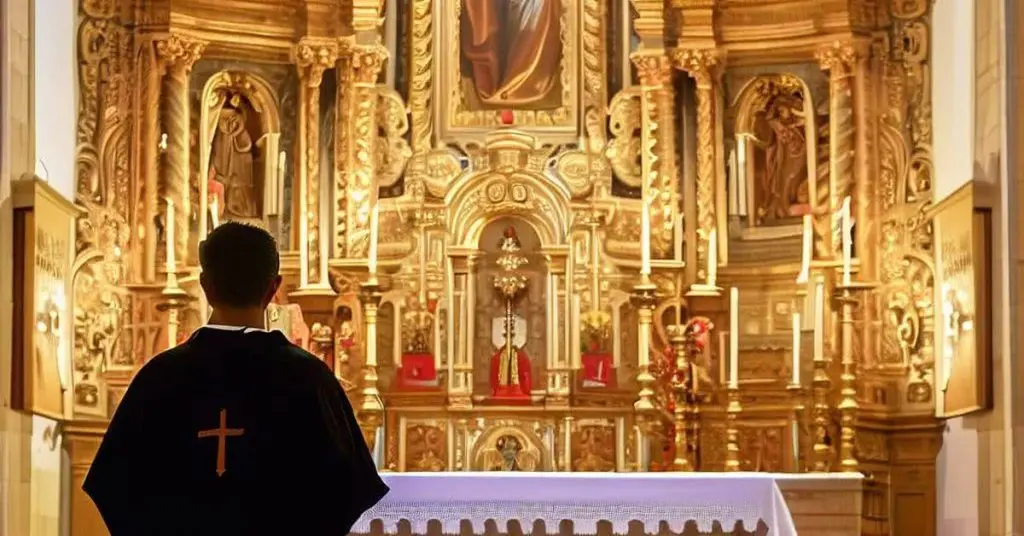
Los Arcos is a small town located in the Navarre region of northern Spain, on the Camino de Santiago pilgrimage route. It’s a town that offers a unique mix of history, nature, and culture, and has attracted visitors from around the world for many years.
Location and History
Los Arcos is situated in the heart of the Navarre region, surrounded by rolling hills and fertile fields. The town dates back to the 12th century when it was established as a settlement for the Knights Templar. Over the centuries, it played a crucial role in the defense of the region and was a strategic location on the Camino de Santiago pilgrimage route.
Los Arcos is a perfect example of a Spanish town that has retained its traditional charm and character, despite being situated on one of the most popular tourist routes in the country. The town has a peaceful and relaxed atmosphere, and visitors can stroll through the narrow streets and alleyways, admiring the beautiful architecture and historic landmarks that dot the town’s landscape.
Points of Interest
Los Arcos has a rich cultural heritage, and visitors can explore numerous landmarks and monuments that bear witness to its fascinating history. One of the most impressive is the Church of Santa Maria, a Gothic-style church that dates back to the 13th century. The church’s interior is decorated with stunning frescoes and artwork, and visitors can climb to the top of the bell tower for panoramic views of the town and surrounding countryside. Other notable landmarks include the Palace of the Ruiz de Vergara family, the town hall, and the medieval bridge over the river Odrón.
In addition to its historic landmarks, Los Arcos is surrounded by stunning natural scenery. The town is situated in the middle of the wine region of Navarre, and visitors can explore the vineyards and wineries that produce some of the country’s most famous wines. The nearby Sierra de Urbasa Natural Park is also a popular destination for hikers and nature enthusiasts, offering breathtaking views of the surrounding landscapes.
Camino-related Services
As a stop on the Camino de Santiago pilgrimage route, Los Arcos offers a range of services and amenities for pilgrims. There are plenty of accommodation options, including budget-friendly hostels and private rooms. Restaurants and cafes serve delicious local cuisine, such as grilled lamb chops and Navarre-style stew. There are also shops selling souvenirs and hiking gear, as well as medical facilities and pharmacies to provide necessary care and assistance.
Festivals and Events
Los Arcos is known for its lively festivals and events, which take place throughout the year. One of the most popular is the Feast of San Juan, which is celebrated in June and features music, dancing, and fireworks. The town also celebrates its annual Medieval Market, where visitors can experience a traditional medieval fair, complete with street performers, artisans, and local food and drink.
Los Arcos is a hidden gem that offers a unique blend of history, nature, and culture. Its stunning natural landscapes, impressive landmarks, and lively festivals make it a must-visit destination for travelers exploring the Navarre region.